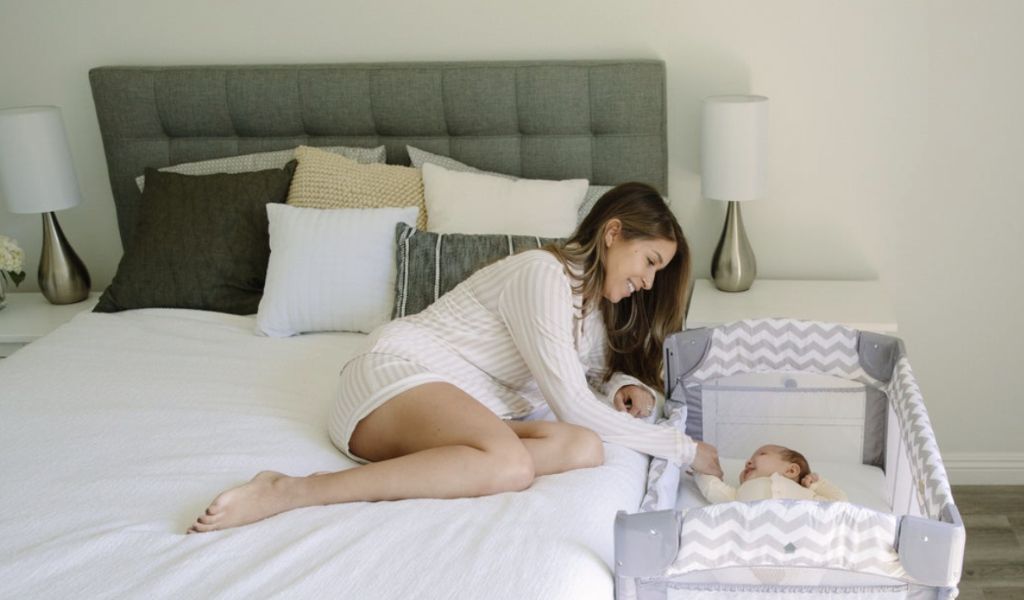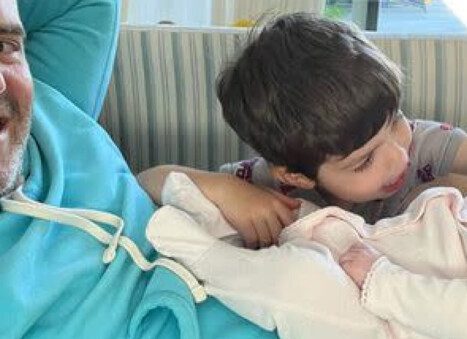
What Every New Parent Should Know About Safe Sleep Spaces for Babies
As a parent, if there is one thing that most people want, then that’s safe sleep spaces for babies. And is that not the most important thing?
So, let’s talk about newborn sleep. Or more accurately… the total lack of it. Honestly, trying to get a baby to sleep in those first few weeks is wild.
Between feeding every two hours and walking around like a zombie, most new parents have had that moment—they blink and realize they’ve nodded off on the couch with baby still in their arms.
It happens.
And sure, it’s easy to obsess over paint colors or whether the changing table should go by the window, but figuring out where your baby should sleep? That one’s trickier.
Crib in your room? Bassinet? Something else? These choices aren’t just about convenience—they’re about safety, too.
So, if you are a new parent and you are looking for safe sleep spaces for babies, then keep reading till the end…
Co-Sleeping vs. Bedsharing: Which One Is Better?
Let’s clear up some confusion right off the bat. “Co-sleeping” doesn’t mean what most people think it means. It’s not sleeping in the same bed.
According to the American Academy of Pediatrics, co-sleeping means the baby sleeps in your room—but in their own crib or bassinet.
Now, “bedsharing” is the other thing—that’s baby sleeping in the bed with you. Or on the couch. Or on a chair while you doze off. And that’s where it gets risky. Really risky.
One more heads-up: bassinets usually come with weight limits. If your baby’s turning into a wiggle monster or starting to sit up? Time to make the switch. Better safe than sorry.
The Dangers of Sharing a Bed with Your Baby

Here’s the hard truth—bedsharing, even if it feels sweet and snuggly, can be super dangerous. I know, no one wants to think that way, but the stats don’t lie.
In 2019, the CDC said nearly 1 in 3 sudden unexpected infant deaths (SUID) were tied to things like suffocation or strangulation during sleep.
Additionally, experts often state that co-sleeping with your newborn is not the safest option if you or your partner is into the following things:
- Alcohol.
- Smoking.
- Sleep-inducing medication.
- Recreational drugs.
Adult beds just aren’t made for tiny humans. Too many pillows, soft blankets, squishy mattresses—and don’t even get me started on how easily a baby can roll or slip into weird spots.
There’s also the terrifying possibility of a parent rolling over without realizing it. Yeah, no thanks.
A bassinet, though? That’s a game-changer. Designed with babies in mind. No fluff, no hazards. Just a snug, safe spot for them to snooze.
Safe Sleep Spaces for Babies: The Right Bassinet Makes It Easier
Dr. William Sears—a name you’ll hear a lot in parenting circles—once said how awesome it is that baby product companies have started listening to science. There are a bunch of options out there now that make sleep safer for babies and easier for exhausted parents.
One of the big ones? The Arm’s Reach Co-Sleeper®. It was made by a couple who were, yep, new parents themselves.
They wanted something that would let their baby be close but still have their own safe space. It’s smart.
It connects to the side of your bed, so you can check on your little one, feed, or just do a quick soothing hand pat—all without leaving the bed. Total lifesaver at 3 a.m.
Dr. Sears put it perfectly: anything that takes the stress down a notch is a win for the whole household. Couldn’t agree more.
Reduce the Risk of SIDS by Half
Most of us have heard the “back to sleep” advice—always place your baby on their back. But what’s not talked about enough is where baby sleeps.
The AAP says babies should sleep in the same room as their parents for at least six months, maybe even up to a year. And here’s the shocker—room-sharing (again, not bedsharing!) can cut the risk of SIDS by up to 50%. That’s huge.
So yeah, where your baby sleeps really does matter. It’s not just about ease—it’s about safety.
Make Middle-of-the-Night Feedings Easier
Feeding every two or three hours? Welcome to newborn life. It’s brutal. You’ll swear time is moving backwards at 2:45 a.m.
Having the baby close in a bassinet makes life so much easier. Especially if you’re breastfeeding. Instead of stumbling across the hallway half-asleep, you just reach over. Done.
And honestly, it helps you stay a little more connected to your baby. You’ll start to recognize the difference between a “hungry” grunt and a “just dreaming” grunt. That stuff matters. Sometimes just hearing them breathe is enough to calm your own nerves and let you fall back asleep.
What Is The SAFEST Place To Sleep For Babies?
As I have already mentioned, experts often suggest that it is best to NOT co-sleep with your newborn.
According to the NHS, the safest space for babies when it comes to sleeping is probably a cot or a basket. And while it is a very popular trend to stuff a baby’s cot or crib with toys, experts generally advise keeping it empty.
And that’s primarily because any form of unnecessary addition that you might make Pinteresty and Instagrammable for your child would only end up covering their nose. Additionally, it might also make it very hot for them to have a peaceful sleep.
Safe Sleep Spaces for Babies Meets Comfort and Closeness
This might be the best part of all—room-sharing gives you the closeness and the safety. You’re right there. They’re right there. But everyone has their own space.
No soft bedding. No roll-over risks. Just peace of mind. You can reach over, check on them, feed them, or rub their belly when they’re squirmy—all without worrying about the dangers of sharing a bed.
During those early months when everything feels brand new and kind of terrifying, having a setup that’s both comforting and secure? That’s gold.
Read Also:
Already have an account?
Sign In
Create your account
User added successfully. Log in








